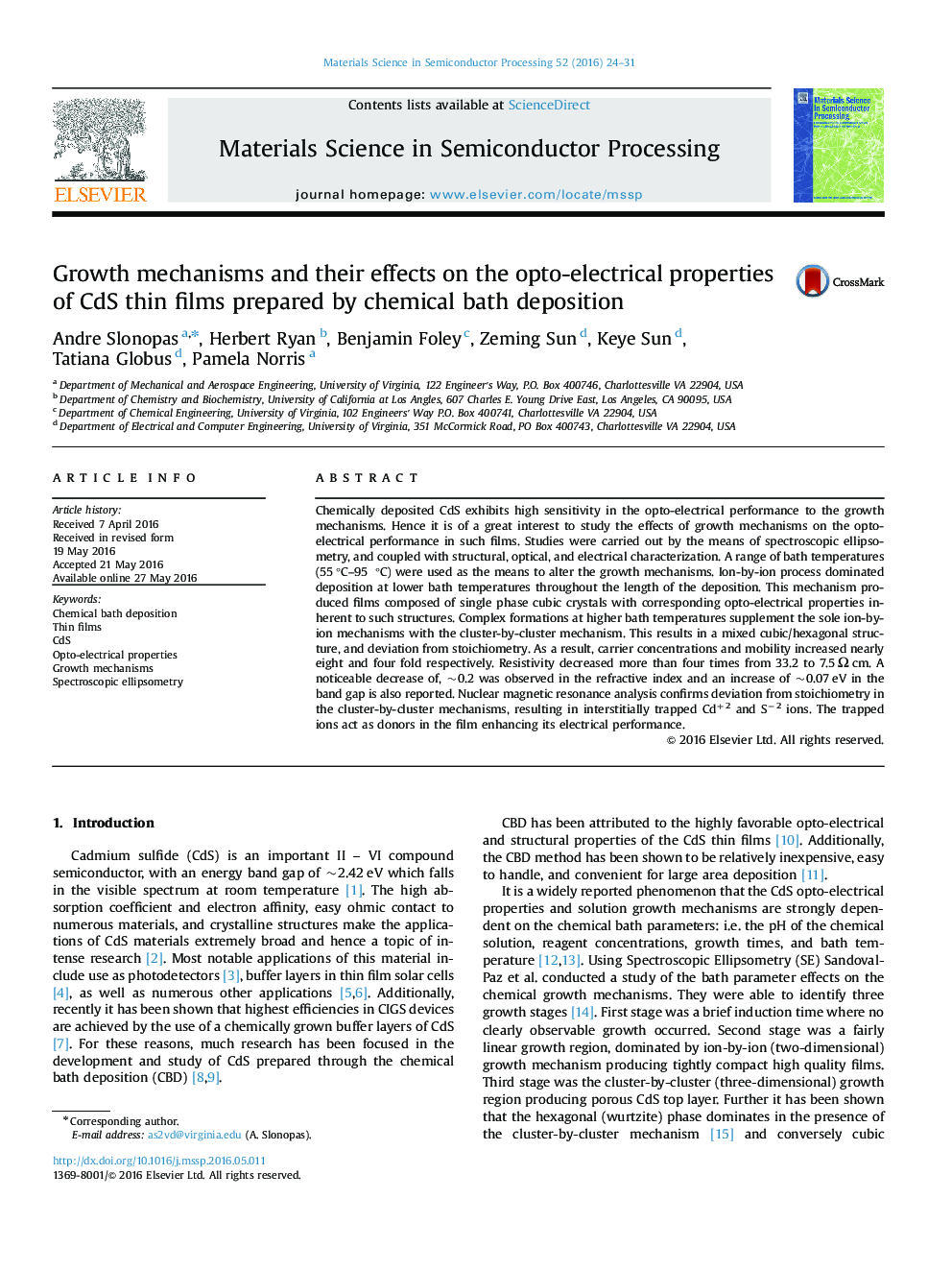| Article ID | Journal | Published Year | Pages | File Type |
|---|---|---|---|---|
| 728905 | Materials Science in Semiconductor Processing | 2016 | 8 Pages |
Chemically deposited CdS exhibits high sensitivity in the opto-electrical performance to the growth mechanisms. Hence it is of a great interest to study the effects of growth mechanisms on the opto-electrical performance in such films. Studies were carried out by the means of spectroscopic ellipsometry, and coupled with structural, optical, and electrical characterization. A range of bath temperatures (55 °C–95 °C) were used as the means to alter the growth mechanisms. Ion-by-ion process dominated deposition at lower bath temperatures throughout the length of the deposition. This mechanism produced films composed of single phase cubic crystals with corresponding opto-electrical properties inherent to such structures. Complex formations at higher bath temperatures supplement the sole ion-by-ion mechanisms with the cluster-by-cluster mechanism. This results in a mixed cubic/hexagonal structure, and deviation from stoichiometry. As a result, carrier concentrations and mobility increased nearly eight and four fold respectively. Resistivity decreased more than four times from 33.2 to 7.5 Ω cm. A noticeable decrease of, ~0.2 was observed in the refractive index and an increase of ~0.07 eV in the band gap is also reported. Nuclear magnetic resonance analysis confirms deviation from stoichiometry in the cluster-by-cluster mechanisms, resulting in interstitially trapped Cd+2 and S−2 ions. The trapped ions act as donors in the film enhancing its electrical performance.
